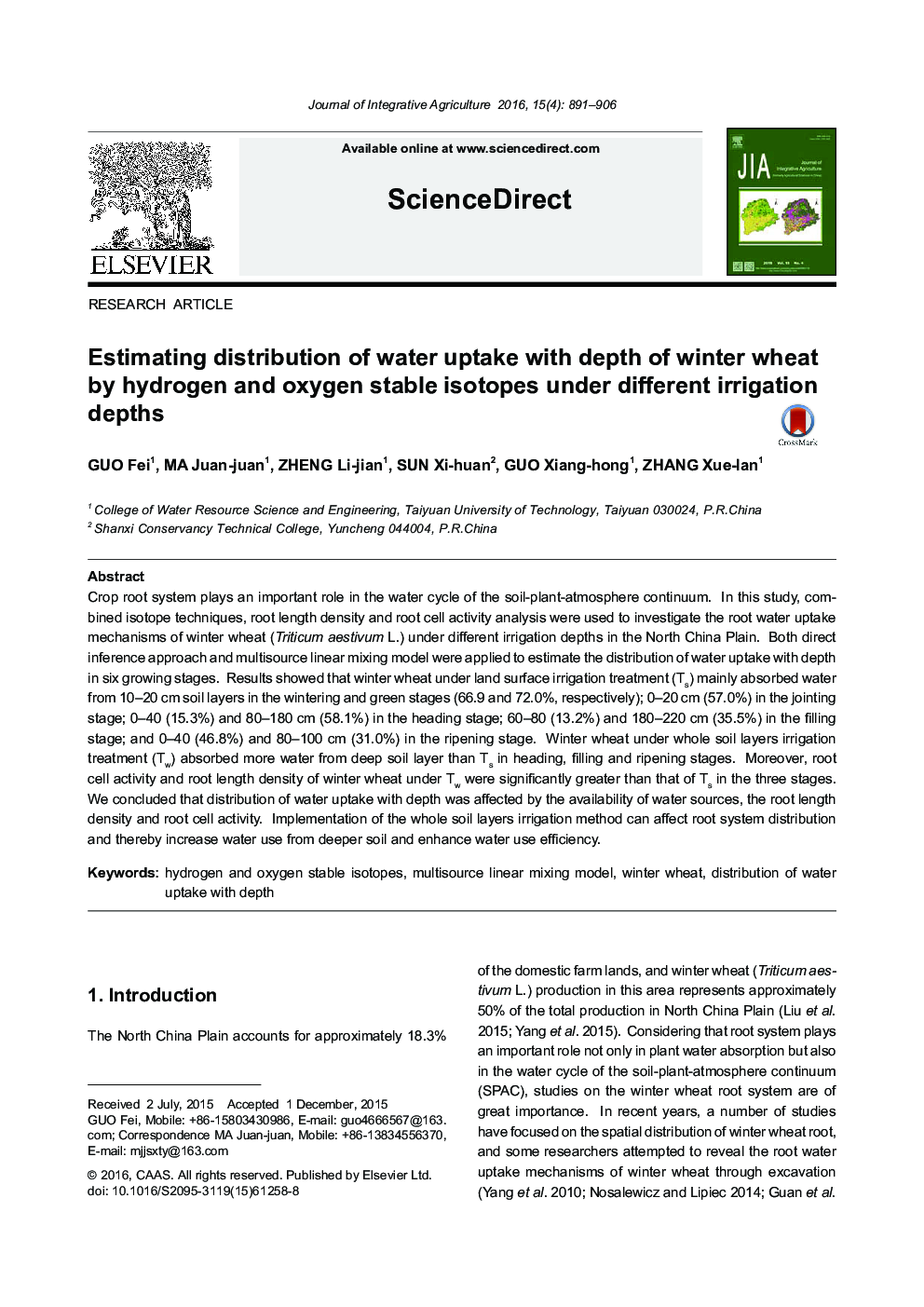| Article ID | Journal | Published Year | Pages | File Type |
|---|---|---|---|---|
| 10179988 | Journal of Integrative Agriculture | 2016 | 16 Pages |
Abstract
Crop root system plays an important role in the water cycle of the soil-plant-atmosphere continuum. In this study, combined isotope techniques, root length density and root cell activity analysis were used to investigate the root water uptake mechanisms of winter wheat (Triticum aestivum L.) under different irrigation depths in the North China Plain. Both direct inference approach and multisource linear mixing model were applied to estimate the distribution of water uptake with depth in six growing stages. Results showed that winter wheat under land surface irrigation treatment (Ts) mainly absorbed water from 10-20 cm soil layers in the wintering and green stages (66.9 and 72.0%, respectively); 0-20 cm (57.0%) in the jointing stage; 0-40 (15.3%) and 80-180 cm (58.1%) in the heading stage; 60-80 (13.2%) and 180-220 cm (35.5%) in the filling stage; and 0-40 (46.8%) and 80-100 cm (31.0%) in the ripening stage. Winter wheat under whole soil layers irrigation treatment (Tw) absorbed more water from deep soil layer than Ts in heading, filling and ripening stages. Moreover, root cell activity and root length density of winter wheat under Tw were significantly greater than that of Ts in the three stages. We concluded that distribution of water uptake with depth was affected by the availability of water sources, the root length density and root cell activity. Implementation of the whole soil layers irrigation method can affect root system distribution and thereby increase water use from deeper soil and enhance water use efficiency.
Keywords
Related Topics
Life Sciences
Agricultural and Biological Sciences
Agricultural and Biological Sciences (General)
Authors
Fei GUO, Juan-juan MA, Li-jian ZHENG, Xi-huan SUN, Xiang-hong GUO, Xue-lan ZHANG,
